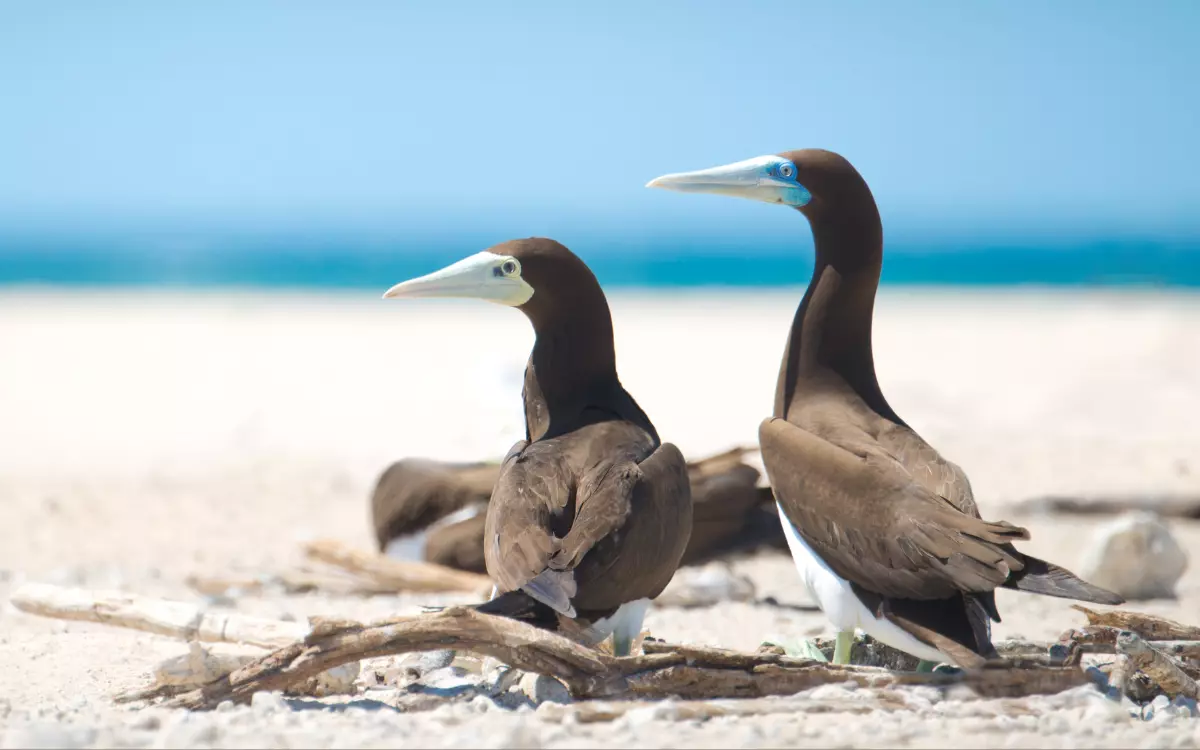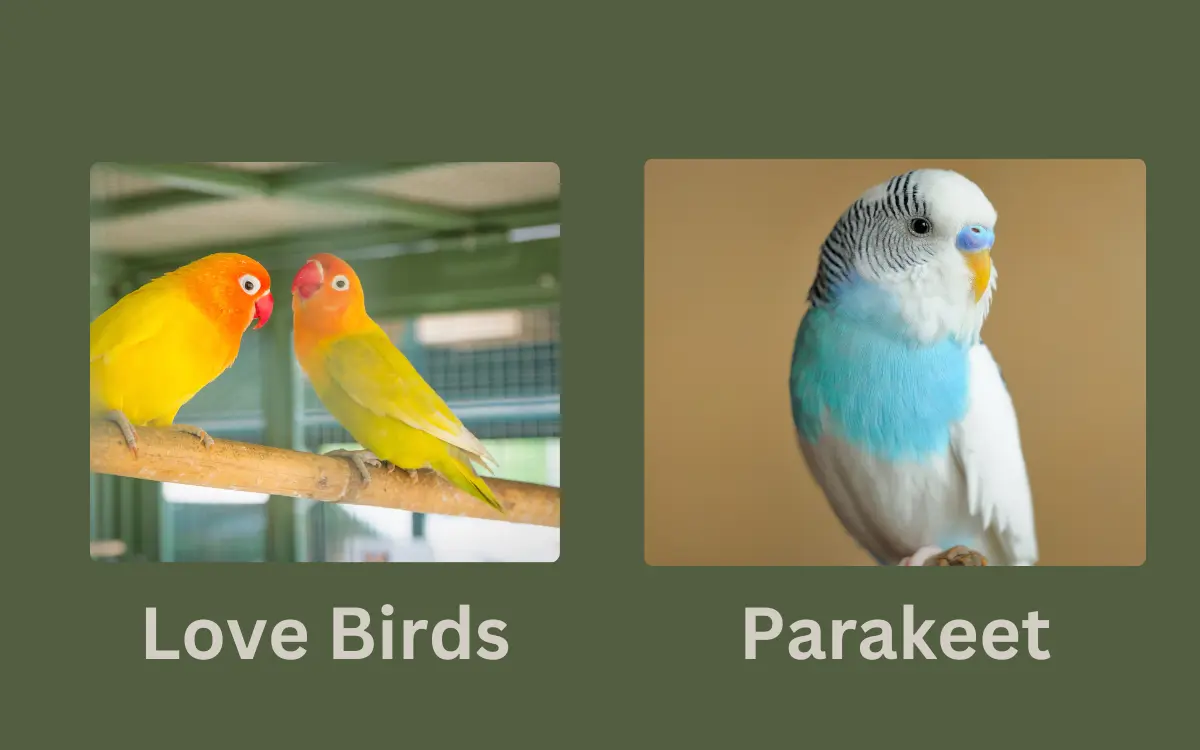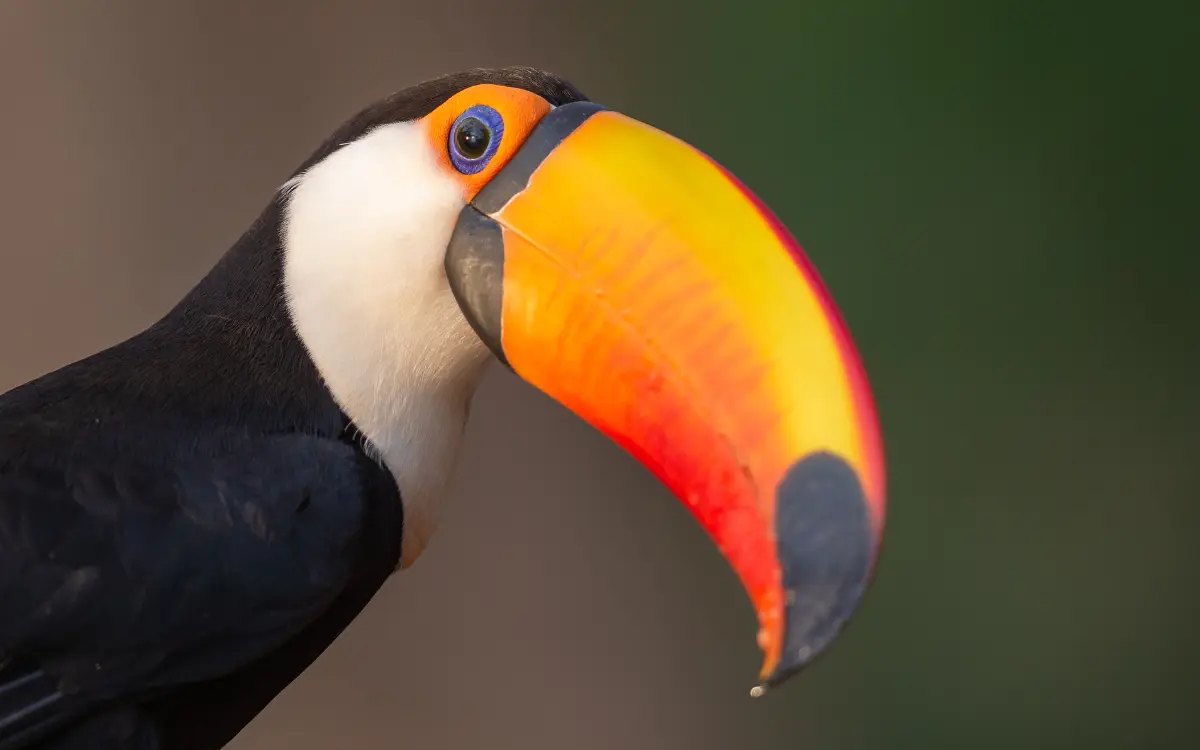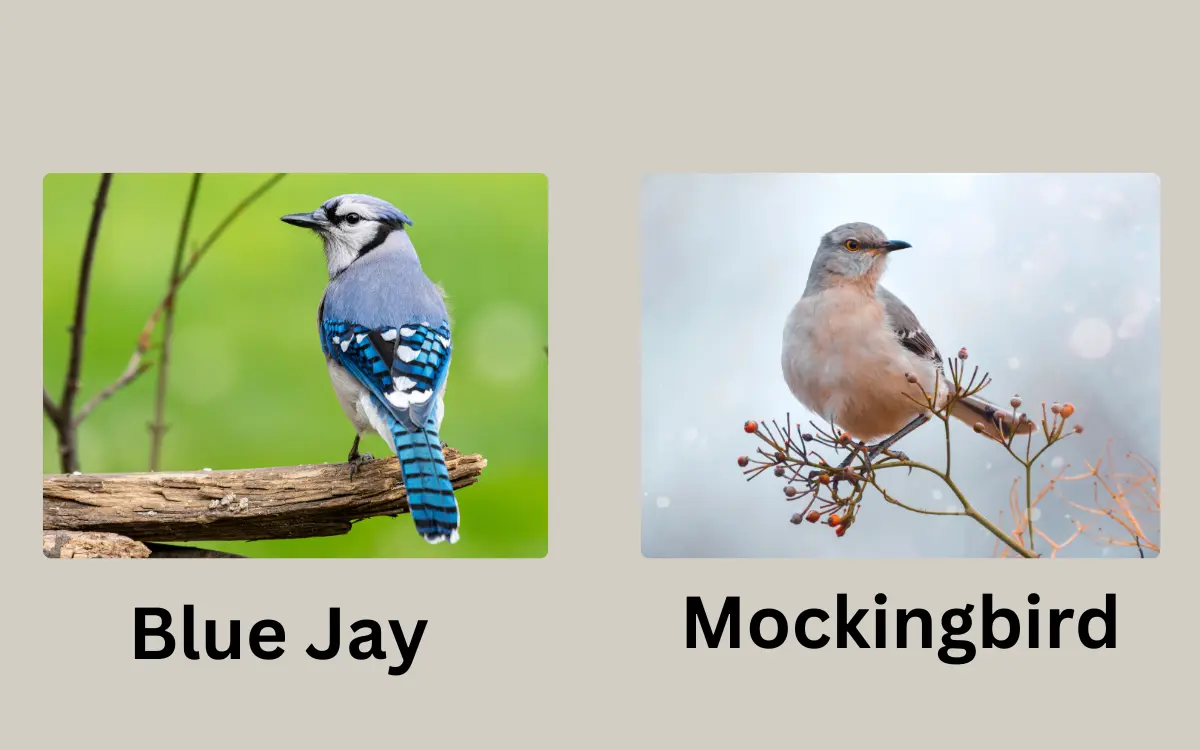Baby Pigeons: Everything You Need to Know
Pigeons are common birds found in cities around the world. This article will explore the life of baby pigeons, how they grow, what they eat, and why we rarely see them when they are young.
What Do They Look Like?
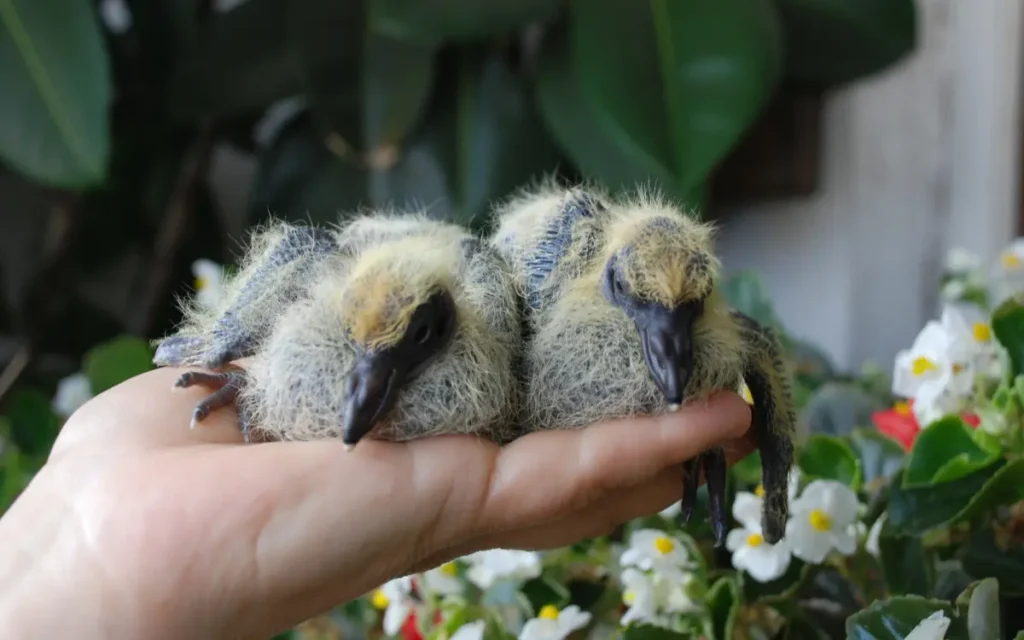
Physical Characteristics
- Baby Pigeons: Small, covered in yellow or grey down feathers, have closed or partially opened eyes and pinkish skin.
- Adult Pigeons: Larger, fully feathered with a smooth and shiny coat, often grey with iridescent neck feathers.
Differences Between Baby Pigeons and Adult Pigeons
- Size: Babies are much smaller than adults.
- Feathers: Babies have fluffy down, while adults have smooth feathers.
- Beak: Babies have a shorter, softer beak; adults have a longer, harder beak.
- Eyes: Babies have closed or partially open eyes; adults have fully open, alert eyes.
How to Tell How Old a Baby Pigeon Is (Pictures)
- 0-3 Days: Eyes closed, yellow down feathers.
- 4-7 Days: Eyes starting to open, more down feathers.
- 1-2 Weeks: Eyes fully open, wing feathers developing.
- 2-3 Weeks: Larger, beginning to look like miniature adults, more feathers.
- 3-4 Weeks: Nearly fully feathered, beginning to leave the nest.
Why Don’t You See Baby Pigeons?

Pigeons have unique nesting habits that keep their young hidden from view. They typically nest in high, secluded places like building ledges, rooftops, and under bridges.
These locations offer safety from predators and protection from harsh weather. Baby pigeons stay in the nest until they are almost fully grown, so by the time they leave the nest, they look much like adult pigeons. This is why it’s rare to see baby pigeons in public places.
Life Cycle of Baby Pigeons (Stages)
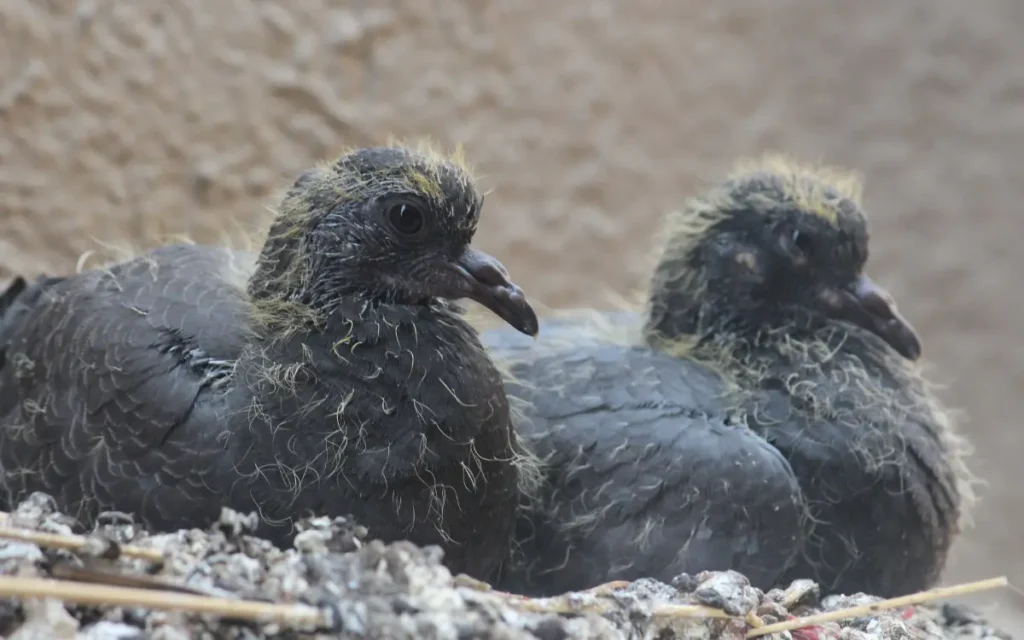
Egg Stage
- Incubation Period: The mother pigeon lays two eggs and keeps them warm for about 18 days. Both parents take turns sitting on the eggs to keep them cozy and safe.
- Parental Care During Incubation: While one parent is in the nest, the other is out finding food. They work together to make sure the eggs are always protected.
Hatchling Stage
- Appearance and Behavior: When the baby pigeons hatch, they are tiny, with closed eyes, and covered in yellow or grey fluffy down. They make soft peeping sounds.
- Dependence on Parents: The hatchlings rely entirely on their parents for warmth and food. The parents feed them a special “pigeon milk” they produce in their crops.
Nestling Stage
- Growth and Development: As the baby pigeons grow, they start to get bigger and stronger. Their eyes open, and they begin to move around the nest more.
- Feather Development: The fluffy down feathers are gradually replaced by real feathers. You’ll see little feather shafts poking out, which eventually become full feathers.
Fledgling Stage
- Learning to Fly: At about three to four weeks old, the baby pigeons are almost fully grown and start flapping their wings. They practice flying by hopping around the nest and nearby areas.
- Transition to Independence: Once they are strong enough, the young pigeons leave the nest and begin to explore the world on their own. They still might follow their parents for a little while, learning how to find food and stay safe.
Feeding a Baby Pigeon
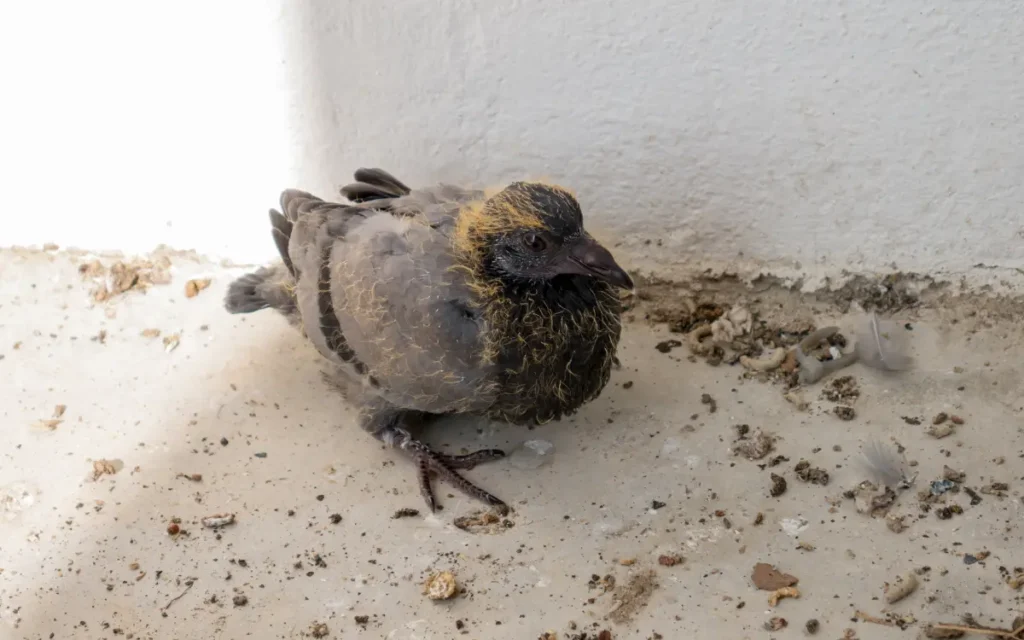
Diet and Nutrition Requirements
Baby pigeons need a special diet to grow healthy and strong. In the wild, they consume a high-protein, high-fat substance called “pigeon milk,” which is produced by both parent pigeons. This milk is rich in nutrients essential for their development.
How Parents Feed Their Chicks
Parent pigeons have a unique way of feeding their chicks. They produce pigeon milk in their crops, a special part of their throat. The baby pigeons stick their beaks inside the parent’s mouth to drink this nutritious milk. As the chicks grow older, the parents gradually introduce seeds and other solid foods.
Tips for Feeding an Orphaned Baby Pigeon
If you find an orphaned baby pigeon, it’s important to feed it correctly:
- Warmth: Keep the baby pigeon warm before feeding.
- Feeding Formula: Use a commercial baby bird formula, available at pet stores, or make a homemade mix of baby cereal and water.
- Feeding Method: Use a small syringe or dropper to feed the baby pigeon. Gently place the tip inside the pigeon’s beak and release the food slowly.
- Frequency: Feed the baby every few hours. Younger pigeons need more frequent feedings.
- Hydration: Make sure the baby pigeon is also getting enough water. You can offer small drops of water in between feedings.
Do you know there are Pigeon Meaning: Symbolism and Significance Explained that can amaze you.
How to Care for a Baby Pigeon if You Found It
Assessing the Situation First,
Check if the baby pigeon is truly abandoned. Sometimes, parents are nearby and will return soon. If the pigeon is in immediate danger from predators or harsh weather, it’s best to intervene.
Providing Warmth and Shelter
Baby pigeons cannot regulate their body temperature well, so keeping them warm is crucial. Place the pigeon in a small box lined with soft cloth or tissues. You can use a heating pad set on low or a hot water bottle wrapped in a towel to provide warmth, making sure there’s a cooler area for the pigeon to move to if it gets too warm.
Feeding and Hydration
- Feeding: Use a commercial baby bird formula or a homemade mixture of baby cereal and water. Feed the pigeon using a small syringe or dropper. Gently place the tip inside the pigeon’s beak and release the food slowly.
- Hydration: Offer small drops of water between feedings. Be cautious to avoid giving too much water at once, which can cause choking.
Read also:- Pigeon vs Mourning Dove: Key Differences and Similarities
Baby Pigeon Facts and Myths
Common Misconceptions
Myth: Pigeons are dirty and spread diseases.
- Fact: Pigeons are quite clean birds. While they can carry some diseases, the risk of transmission to humans is low with proper hygiene.
Myth: Baby pigeons are rarely seen because they are a different species.
- Fact: Baby pigeons are the same species as adult pigeons. They stay hidden in nests until they are nearly fully grown.
Myth: Pigeons abandon their chicks if humans touch them.
- Fact: Pigeons do not abandon their chicks if touched by humans. However, it’s best to minimize handling to reduce stress on the birds.
Interesting Facts
- Milk Production: Both parent pigeons produce a special “pigeon milk” from their crops to feed their chicks. This milk is rich in nutrients and essential for the babies’ growth.
- Rapid Growth: Baby pigeons grow quickly and are ready to leave the nest in just about 4 weeks.
- Hidden Nests: Pigeons typically build their nests in high, hidden places like building ledges and under bridges, which is why baby pigeons are rarely seen.
- Strong Family Bonds: Pigeons often form strong pair bonds and both parents share the responsibilities of incubating the eggs and feeding the chicks.
- Early Learning: Young pigeons, called squabs, start learning to fly at about 3-4 weeks old. They practice flapping their wings and hopping around the nest before taking their first flight.
FAQs
When Can Baby Pigeons Fly?
Baby pigeons, also known as squabs, typically start learning to fly at about 3 to 4 weeks old. They practice by flapping their wings and hopping around the nest. By 4 to 6 weeks, they are usually ready to take their first flights and begin exploring their surroundings.
How Long Are Baby Pigeons in the Nest?
Baby pigeons stay in the nest for about 4 weeks. During this time, they are cared for by their parents, who feed them and keep them warm. By the time they leave the nest, they are nearly the size of adult pigeons and have most of their feathers. This is why it’s rare to see very young pigeons out in the open.
Can You Raise a Baby Pigeon at Home?
While it is possible to raise a baby pigeon at home, it requires a lot of care and attention. You need to provide proper warmth, feeding, and hydration. If you find a baby pigeon, it’s best to contact a wildlife rehabilitator or veterinarian for guidance.

